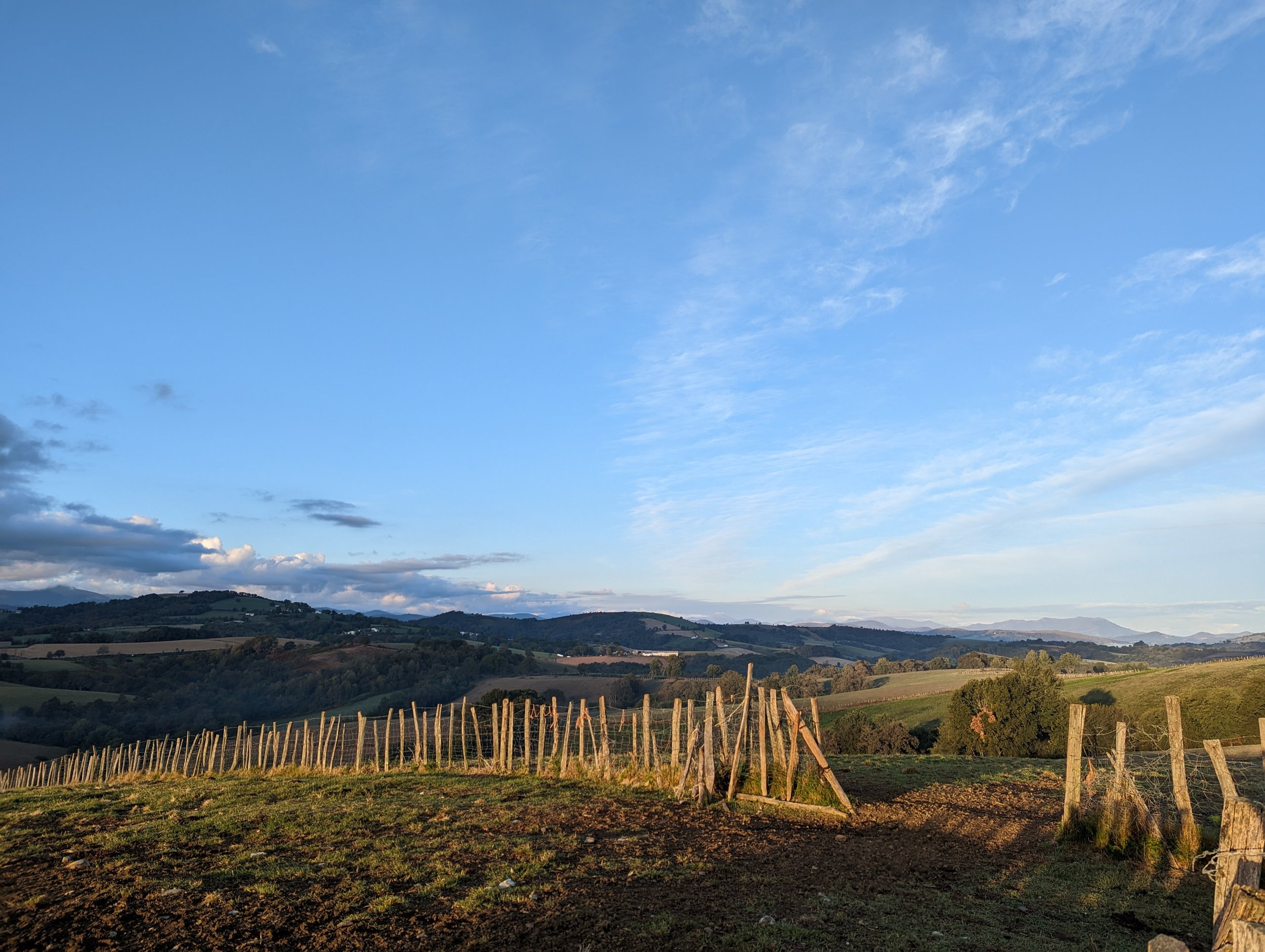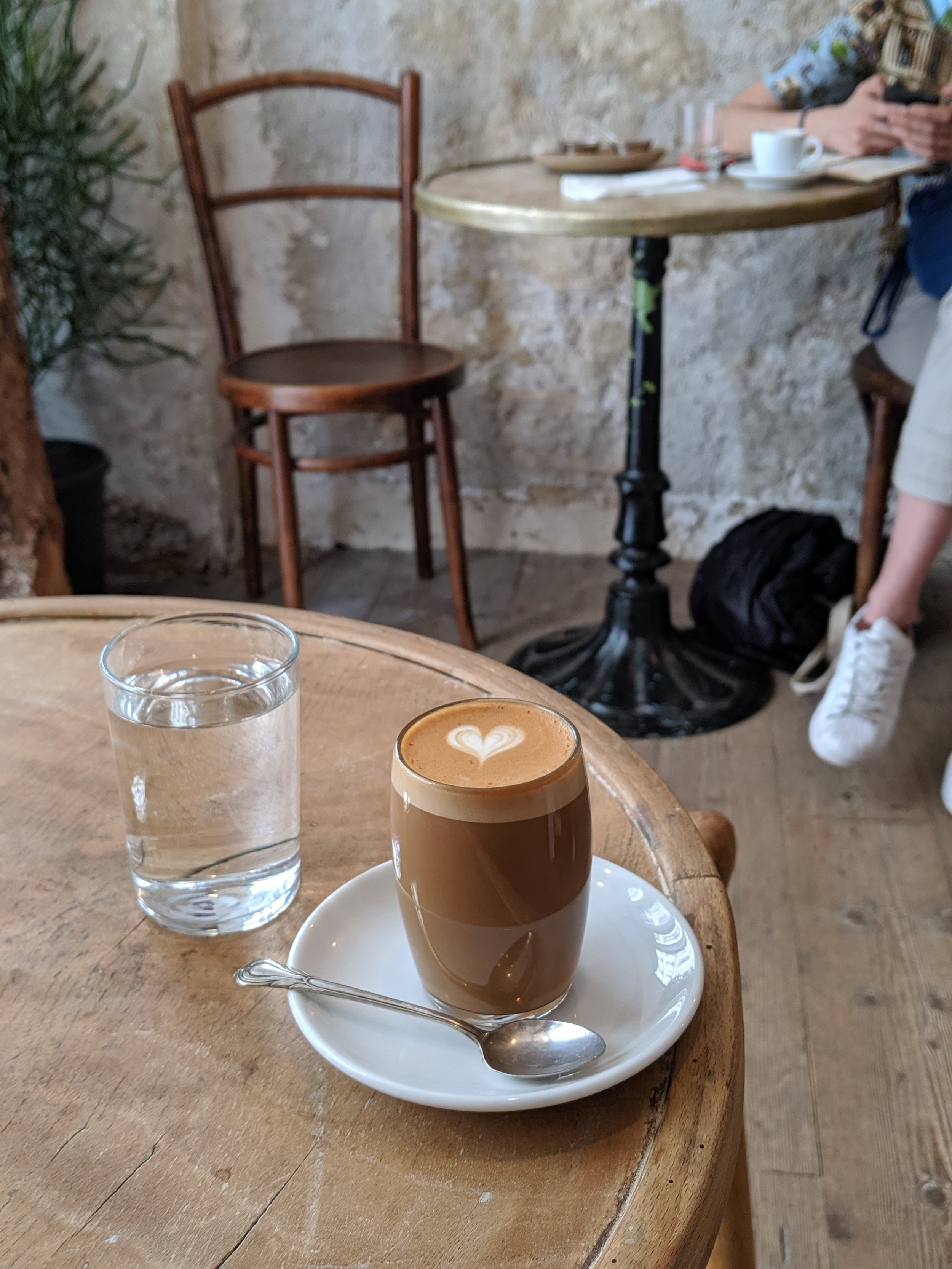A Very French Camino: An Introduction to The Via Podiensis
/I was inspired to walk the Camino after visiting Santiago de Compostela, the Spanish town famous for being the destination of pilgrims across Europe since the 9th Century. The cathedral there is said to house the relics and remains of Saint James, and while this fact didn’t inspire me personally, the spirit of the Camino is palpable and something I wanted to be a part of. I already loved Europe, long walks, and challenging travel adventure, so I could easily imagine myself on a pilgrimage. However, when I first decided I wanted to walk the Camino, I didn’t realize just how many choices I would have when the time came to actually plan my adventure.
A map of the 4 main Camino trails through France, The Via Podiensis highlighted
Many Camino Options
The most popular Camino route is called The Frances, which begins in a French town called St Jean Pied-de-Port, but after the departure day, it is a walk across the northern section of Spain. After a bit of research, I discovered there were many official Camino trails extending all over Europe. They exist mainly in Portugal, Spain, Italy, and France, but they even stretch beyond to the UK, Germany, and Poland. Depending on the type of experience you seek, any one of these trails could be your ideal Camino. This article stands as my case in amplifying the wonders of the Via Podiensis, the Camino that stretches across southern France.
The Via Podiensis
The Via Podiensis, also known as the Le Puy Route, is approximately 750 km (or 466 miles) and lies entirely within the country of France. It officially begins in the mountain town of Le Puy and ends in St. Jean Pied-de-Port, where some pilgrims choose to continue walking through Spain to Santiago so they can collect their official Compostela certificate. Below I will highlight the many reasons I chose to walk the Via Podiensis, and why I would encourage you to, too!
The Perks of the Via Podiensis
A Quieter Experience
The Via Podiensis begins in Le Puy, a small town with dramatic volcanic rock spires and a cathedral on a hill that will launch you into your Camino like no other place can. This town, like St. Jean Pied-de-Port where the Frances route begins, is more or less dedicated to the Camino and just arriving into town you truly feel like you are properly oriented to your Camino experience. There’s a special 7 AM daily service at the cathedral where you will have a chance to meet other pilgrims, then depart together in a unique ceremony. But once you’re on the trail and the town of Le Puy is behind you, you will see that this trail is not only safe and quiet, but also wonderfully marked with clear signage and even bathrooms and water spouts aplenty. You will feel truly well-cared for by the Camino and the surrounding communities. And of course your fellow pilgrims are always a source of information and assistance if needed. What I love most about the Via Podiensis, is it’s a trail that will give you true peace of mind in a remarkable setting.
An “Older” Experience
The walkers on the Via Podiensis certainly come in all ages. I met college students up through retired couples. However, I think it’s important to mention that those walking this trail tend to trend older than what you’ll see on the Spanish Caminos. It turns out it’s very popular in France for retired people and groups of friends to walk sections of the Via Podiensis for fun. I can’t blame them as the experience is sublime and you can go at your own pace, but if you’re looking to meet dozens of 20-somethings on the trail ready to mingle, you may want to consider walking the popular Frances route instead. Knowing this in advance, I understood the Via Podiensis wouild make the most sense for me and what I was looking for in a Camino. I’m married, middle-aged, and was interested in a quieter trail, so I was thankful to have the many Camino options and selected the Via Podiensis!
French Gîte Culture: All About The Food
France takes its dinnertime rituals very seriously. The gîte (the French word for hiker’s hostels lining the Camino trail) owners across the Via Podiensis typically offer a “demi-pension” lodging option, which is certainly what most pilgrims are looking for. It’s a chance to eat a delicious home-cooked meal around 7 PM, have a nice shower/bed, and then some quick breakfast in the morning before you start your walk. It’s a lot of work for the gîte owners, but for the pilgrim, you are welcomed in the afternoon after a tiring day on the trail, and offered immediate comfort and care. This could include an aperitif cocktail, a cool foot soak, or a poolside lounge chair. There is no limit to the types of gites in France, but most tend to be smaller than the hostels you find in Spain. You can almost guarantee you’ll leave the next morning having eaten a wonderful hot meal and have made a few more friends around the dinner table sharing local wine and personal stories about the day.
The Beauty of Southern France
The Via Podiensis has a very appealing placement through gorgeous and lesser-known regions of southern France. Camino walkers on the Via Podiensis often have to come first to the city of Lyon (either flying directly there or taking a train there from Paris) prior to taking a train to Le Puy. This provides a wonderful opportunity to acclimate to a new time zone by exploring the fabulous “foodie” city of Lyon. Also, the Via Podiensis ends near the cities of Bayonne, Biarritz, and Bordeaux giving you a reason to acquaint yourself with France’s lesser visited but absolutely remarkable cities on the Atlantic coast. I found myself falling in love with both Lyon and Bordeaux on either side of my Camino adventure, and am so grateful.
But aside from these urban delights, the towns you walk through daily on the Via Podiensis are small and appear like something out of Beauty and the Beast. Le Puy, Conques, Cahors, Lauzerte, Auvillar, and Lectoure, to name a few, will satisfy any and all desire you may have to find yourself in a quiet slice of medieval France where you will have the chance to drink a glass of wine in an ancient city square while you contemplate the gorgeous stretch of land you traversed that day.
Escape America(ns) and Learn French
This point was very appealing to me. The Caminos outside Spain tend to have more locals and fewer American tourists. Since I am a francophile who studied French in school, I knew I would embrace the chance to practice and build upon my language skills. And this of course is done best by putting myself at intimate dinner tables surrounded by actual French people. One thing to know about the Frances Camino in Spain, is there are so many international pilgrims that the common language tends to be English. While this makes things easy for anglophones, one big reason to walk the Camino for me, was to put myself into a different culture and out of my comfort zone completely. The Via Podiensis is the perfect balance of comfort (see the gite/food section above!) and challenge (the daily walk and social interactions in France!). But if you don’t speak any French, you’ll still find a excellent experience with patient and kind pilgrims willing to help. Most people have some knowledge of English in France, but it does put pressure on you to learn at least some basics!
Similarities to the Frances Camino in Spain
You may fear that walking on the Via Podiensis will lack some of the spirit or community found in Spain. I shared some of this same fear myself. However, the Via Podiensis offers both a traditional Camino experience, but also something that is more unique and rare: the chance to focus in on making connections over delicious French food and wine while you walk mainly with Europeans.
The Via Podiensis is part of the same established Camino path that pilgrims have walked for hundreds of years on their way to Santiago de Compostela. You will be able to collect pilgrim passport stamps and wear a scallop shell just like other Santiago pilgrimages. The biggest differences are listed in this article, around your fellow pilgrims and the experience you’ll have in the evening hostels.
The decision of which Camino you choose comes down to what kind of experience is the best fit for you. All Camino pilgrims seek, no matter the trail, friendly and inclusive trail interactions mixed with time for introspection, so rest assured you will get everything out of this Camino that you put into it. You can easily make excellent connections with French pilgrims and also have more than enough time to contemplate life, history, and the beauty of Europe. Like I did, always consider your options!
Are you planning a Camino pilgrimage and want to learn more about what to pack? See my article on creating the ultimate Camino packing list.
















































